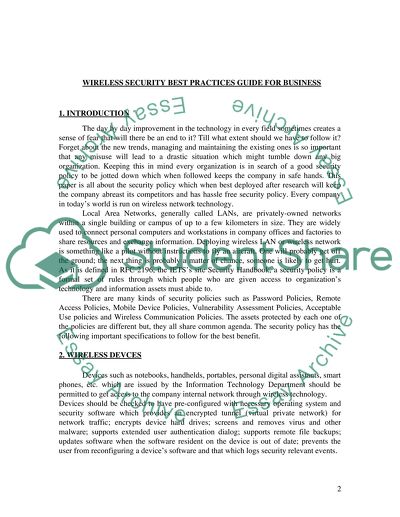Cite this document
(“Wireless Security Best Practices Guide for Business Essay”, n.d.)
Wireless Security Best Practices Guide for Business Essay. Retrieved from https://studentshare.org/miscellaneous/1544532-wireless-security-best-practices-guide-for-business
Wireless Security Best Practices Guide for Business Essay. Retrieved from https://studentshare.org/miscellaneous/1544532-wireless-security-best-practices-guide-for-business
(Wireless Security Best Practices Guide for Business Essay)
Wireless Security Best Practices Guide for Business Essay. https://studentshare.org/miscellaneous/1544532-wireless-security-best-practices-guide-for-business.
Wireless Security Best Practices Guide for Business Essay. https://studentshare.org/miscellaneous/1544532-wireless-security-best-practices-guide-for-business.
“Wireless Security Best Practices Guide for Business Essay”, n.d. https://studentshare.org/miscellaneous/1544532-wireless-security-best-practices-guide-for-business.


